-
Dawn of the Anthropocene: five ways we know humans have triggered a new geological epoch

Is the Anthropocene real? That is, the vigorously debated concept of a new geological epoch driven by humans. Our environmental impact is indeed profound — there is little debate about that — but is it significant on a geological timescale, measured over millions of years? And will humans leave a distinctive mark upon the layers of rocks that geologists of 100,000,000AD might use to investigate the present day? The human-driven changes to the Earth’s environment are comparable in scale to those of earlier epochs. The extraordinarily wide range of geological signals associated with the Anthropocene means comparison with earlier epochs is not straightforward, but the evidence indicates an overall magnitude of change at least as large as that which ushered in the Holocene, our current geological epoch, and most other epochs. It means that humans are moving the Earth system from the comparative environmental stability of the Holocene into a new, evolving planetary state. And the impact will be felt by all human generations to come.
-
-
Record December boosted 2015 to second warmest year for contiguous U.S.

The 2015 annual average U.S. temperature was 54.4°F, 2.4°F above the twentieth century average, the second warmest year on record. Only 2012 was warmer for the United States with an average temperature of 55.3°F. This is the nineteenth consecutive year the annual average temperature exceeded the twentieth century average. The first part of the year was marked by extreme warmth in the West and cold in the East, but by the end of 2015, record warmth spanned the East with near-average temperatures across the West. This temperature pattern resulted in every state having an above-average annual temperature.
-
-
The Anthropocene: Hard evidence for a new, human-driven geological epoch
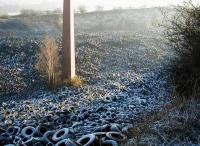
The evidence for a new geological epoch which marks the impact of human activity on the Earth is now overwhelming, according to a recent paper by an international group of geoscientists. The Anthropocene, which is argued to start in the mid-twentieth century, is marked by the spread of materials such as aluminum, concrete, plastic, fly ash, and fallout from nuclear testing across the planet, coincident with elevated greenhouse gas emissions and unprecedented trans-global species invasions. The researchers set out to anser this question: To what extent are human actions recorded as measurable signals in geological strata, and is the Anthropocene world markedly different from the stable Holocene Epoch of the last 11,700 years which allowed human civilization to develop?
-
-
Drought, heat deleterious for global crops

Drought and extreme heat slashed global cereal harvests between 1964 and 2007 — and the impact of these weather disasters was greatest in North America, Europe, and Australasia. At a time when global warming is projected to produce more extreme weather, a new study provides the most comprehensive look yet at the influence of such events on crop area, yields, and production around the world.
-
-
Current pace of environmental change unprecedented in Earth’s history
Researchers have further documented the unprecedented rate of environmental change occurring today, compared to that which occurred during natural events in Earth’s history. The environmental change in the past “appears to have been far slower than that of today, taking place over hundreds of thousands of years, rather than the centuries over which human activity is increasing atmospheric carbon dioxide levels,” says a leading expert.
-
-
Global electricity production vulnerable to climate change, water resource decline

Climate change impacts and associated changes in water resources could lead to reductions in electricity production capacity for more than 60 percent of the power plants worldwide from 2040-2069. A new study calls for a greater focus on adaptation efforts in order to maintain future energy security. Making power plants more efficient and flexible could mitigate much of the decline.
-
-
Large and growing methane emissions from northern lakes

Methane is increasing in the atmosphere, but many of its sources are poorly understood. Climate-sensitive regions in the north are home to most of the world’s lakes. New research shows that these northern freshwaters are critical emitters of methane, a more effective greenhouse gas than carbon dioxide.
-
-
Climate-induced disasters linked to food security across time and place
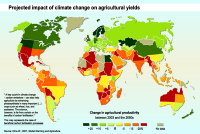
Teams of researchers in the American Southwest and North Atlantic Islands have found that historic and prehistoric peoples in these regions who had created vulnerabilities to food shortfall were especially susceptible to impacts from climate challenges. Their “natural” disasters were human made in conjunction with climate challenges.
-
-
U.K.: Economic costs from flooding could reach £1.5bn, reduce GDP growth
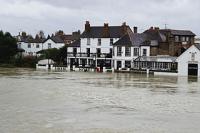
Economic losses caused by the flooding which has devastated parts of Britain in the past few days could exceed 1.5 billion pounds, and shave 0.2-0.3 percent off GDP growth overall in the first quarter of 2016. Insurers will likely shoulder the bulk of the burden after first Storm Desmond and then Storm Eva saw waters swamp large swathes of the country.
-
-
U.K. government rejected flood warnings from own advisers
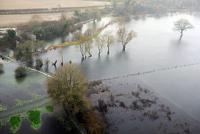
Critics charge that the U.K. government was warned by both the government’s own climate change experts and outside consultants that there was a need to take urgent action to protect the increasing number areas in Britain which are becoming susceptible to flooding, but that the government rejected the advice. Despite the urging of its own climate experts, the U.K. government in October, just a few weeks before the devastating flooding in Cumbria, decided not to develop comprehensive strategy to address flood risk.
-
-
Climate change losses for Southeast Asia well above previous estimate: ADB
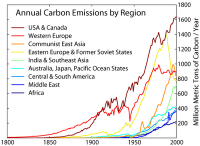
Economic losses from the impacts of climate change in Southeast Asia could be 60 percent higher than previously estimated, reducing the region’s gross domestic product (GDP) by up to 11 percent by 2100, according to a new Asian Development Bank (ADB) study. The analysis is an update to a 2009 ADB report that estimated a 7 percent annual reduction in economic output due to climate change.
-
-
U.S. facing looming grain failures

Across the United States, record quantities of corn and soybeans have been harvested in recent years. However, according to new research, this trend may soon change. “By midcentury,” the interdisciplinary team reports, “temperatures in Illinois will likely be closer to those of today’s mid-South, and precipitation will range somewhere between that of today’s East Texas and that of the Carolinas.” In the face of a rapidly changing climate, the researchers call for a U.S. Midwest field research network to address crucial agricultural challenges.
-
-
Climate change rapidly warming world’s lakes, threatening freshwater supplies
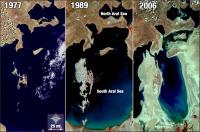
Climate change is rapidly warming lakes around the world, threatening freshwater supplies and ecosystems, according to a study spanning six continents. The study is the largest of its kind and the first to use a combination of satellite temperature data and long-term ground measurements. A total of 235 lakes, representing more than half of the world’s freshwater supply, were monitored for at least twenty-five years. The study found that lakes are warming an average of 0.61 degrees Fahrenheit (0.34 degrees Celsius) each decade. This is greater than the warming rate of either the ocean or the atmosphere, and it can have profound effects, the scientists say.
-
-
Autumn 2015 was record warm for the contiguous U.S.
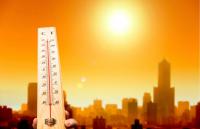
The National Oceanic and Atmospheric Administration (NOAA) ha release a report which shows that the autumn of 2015 was the warmest autumn in the last 121 years — since measurements began in 1895. The September-November contiguous U.S. average temperature was 56.8°F, 3.3°F above the twentieth century average, surpassing the previous record of 56.6°F set in 1963. Record and near-record warmth spanned much of the nation. The November contiguous U.S. temperature was 44.7°F, 3.0°F above the twentieth century average and the thirteenth warmest in the 121-year period of record.
-
-
The third intifada; new, smaller Schengen; EU border patrol
Mahmud Abbas, the president of the Palestinian Authority, has been warned by the military wing of the PLO that unless he can persuade the UN Security Council to vote for a resolution calling for the creation of an independent Palestinian state, a new intifada will be launched to convince Israel that a continued occupation of Palestinian lands will be costly; European officials are planning to abandon the 30-year old Schengen Agreement and replace it with a much smaller, Western Europe-only free-travel zone; facing rising seas, residents of the Pacific island of Tuvalu are looking for a new home.
-
- All
- Regional
- Water
- Biometrics
- Borders/Immig
- Business
- Cybersecurity
- Detection
- Disasters
- Government
- Infrastructure
- International
- Public health
- Public Safety
- Communication interoperabillity
- Emergency services
- Emergency medical services
- Fire
- First response
- IEDs
- Law Enforcement
- Law Enforcement Technology
- Military technology
- Nonlethal weapons
- Nuclear weapons
- Personal protection equipment
- Police
- Notification /alert systems
- Situational awareness
- Weapons systems
- Sci-Tech
- Sector Reports
- Surveillance
- Transportation
Advertising & Marketing: advertise@newswirepubs.com
Editorial: editor@newswirepubs.com
General: info@newswirepubs.com
2010-2011 © News Wire Publications, LLC News Wire Publications, LLC
220 Old Country Road | Suite 200 | Mineola | New York | 11501
Permissions and Policies
Editorial: editor@newswirepubs.com
General: info@newswirepubs.com
2010-2011 © News Wire Publications, LLC News Wire Publications, LLC
220 Old Country Road | Suite 200 | Mineola | New York | 11501
Permissions and Policies
